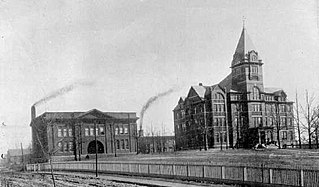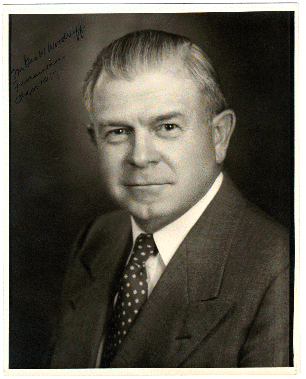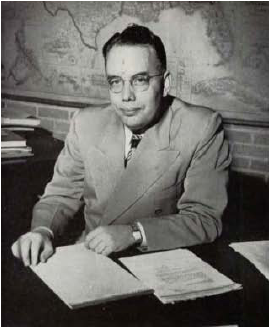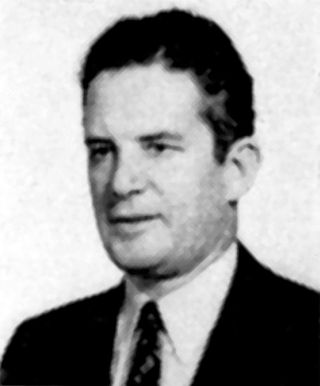
Hank McCamish Pavilion, nicknamed The Thrillerdome and originally known as Alexander Memorial Coliseum, is an indoor arena located on the campus of the Georgia Institute of Technology in Atlanta, Georgia. It is the home of the Georgia Tech Yellow Jackets men's basketball and Yellow Jackets women's basketball teams.

The Gas South Arena is an indoor arena in Duluth, Georgia. It is located approximately 22 miles (35 km) northeast of Atlanta. The arena is one of the many venues within the "Gas South District", which also includes a convention center with an events hall and a performing arts center.

Cassell Coliseum is a 10,052-seat multi-purpose arena in Blacksburg, Virginia, United States, that opened in 1962. It is home to the Virginia Tech Hokies men's and women's basketball teams, wrestling team, and volleyball team.

L.P. Frans Stadium is a stadium in Hickory, North Carolina. It is primarily used for baseball, and is the home field of the Hickory Crawdads Minor League Baseball team of the South Atlantic League. It was built in 1993 and has a fixed seating capacity of roughly 4,000.

The KSU Convocation Center is a multipurpose arena on the campus of Kennesaw State University in Kennesaw, Georgia, United States. The arena has a listed seating capacity of 3,805 people and opened in 2005. It is home to the Kennesaw State Owls men's basketball, women's basketball, and women's volleyball teams, as well as the administrative offices for the KSU athletic department. It is also available for other events and has hosted concerts, conferences, and trade shows, as well as sporting events.
Tiger Arena is a 5,000-seat multi-purpose arena in Savannah, Georgia, United States. It is home to the Savannah State University Tigers men's and women's basketball teams and women's volleyball team. Tiger Arena has previously hosted the Georgia High School Association boys and girls playoffs, the annual Georgia Athletic Coaches Association's North-South All-Star Game (2003-2008), and the Savannah Holiday Classic high school girls basketball tournament. It was also home to the Savannah Steam of American Indoor Football.
The Georgia Tech Research Institute (GTRI) is the nonprofit applied research arm of the Georgia Institute of Technology in Atlanta, Georgia, United States. GTRI employs around 3,000 people, and was involved in nearly $1 billion in research in 2023 for more than 200 clients in industry and government.

The history of the Georgia Institute of Technology can be traced back to Reconstruction-era plans to develop the industrial base of the Southern United States. Founded on October 13, 1885, in Atlanta as the Georgia School of Technology, the university opened in 1888 after the construction of Tech Tower and a shop building and only offered one degree in mechanical engineering. By 1901, degrees in electrical, civil, textile, and chemical engineering were also offered. In 1948, the name was changed to the Georgia Institute of Technology to reflect its evolution from an engineering school to a full technical institute and research university.

George Waldo Woodruff was an American engineer, businessman, and philanthropist in Atlanta, Georgia. He attended the Georgia Institute of Technology in 1917 and gave generously to both his alma mater and Emory University, including what was at the time the single largest donation ever to a school, $105 million to Emory University in 1979.

Thackeray Hall is an academic building of the University of Pittsburgh and a contributing property to the Schenley Farms National Historic District at 139 University Place on the campus of the University of Pittsburgh in Pittsburgh, Pennsylvania, United States.

Marion Luther Brittain Sr. was an American academic administrator and longest serving president of the Georgia Institute of Technology from 1922 to 1944. Brittain was born in Georgia and, aside from a brief stint at the University of Chicago for graduate school, spent most of his life serving the educational community there. After receiving a Bachelor of Arts degree from Emory College in 1886, Brittain worked his way up the ranks from principal of an Atlanta high school to superintendent of education for the entire state of Georgia.

Allen Hall at the University of Pittsburgh is a Pittsburgh History and Landmarks Foundation Historic Landmark and a contributing property to the Schenley Farms National Historic District. Completed in 1914 and originally serving as the home to the Mellon Institute of Industrial Research, the six-story Greek Revival building designed by J. H. Giesey now serves as the home of the university's Department of Physics and Astronomy.

Gerald A. Rosselot was an American physicist and engineering executive at the Georgia Institute of Technology, the Georgia Tech Research Institute and Bendix Corporation. He was an IEEE Fellow.
Harold Alan Bunger was the head of Georgia Tech's chemistry department and the director of the Georgia Tech Research Institute from 1940 until his death in 1941.

William Vernon Skiles was a professor of mathematics and dean at the Georgia Institute of Technology. He helped create what is now the Georgia Tech Research Institute.
Lane Mitchell was an American ceramic engineer at the Georgia Institute of Technology and the head of the Department of Ceramic Engineering there, now known as Georgia Tech's School of Materials Science and Engineering.

James Emory Boyd was an American physicist, mathematician, and academic administrator. He was director of the Georgia Tech Research Institute from 1957 to 1961, president of West Georgia College from 1961 to 1971, and acting president of the Georgia Institute of Technology from 1971 to 1972.

Robert E. Stiemke was an American civil engineer, director of the Georgia Tech School of Civil Engineering from 1950 to 1962, director of the Georgia Tech Research Institute from 1961 to 1963, and Georgia Tech's first Associate Dean of Faculties and Administrator of Research after July 1, 1963.
Montgomery Knight was an aeronautical engineer who specialized in rotary-wing aircraft. He was the first director of the Guggenheim School of Aeronautics at the Georgia Institute of Technology and a founder of and long-time researcher at the Georgia Tech Research Institute.

The Ranger Bridge between Wells River, Vermont and Woodsville, New Hampshire, is a three-hinged steel arch truss bridge over the Connecticut River. It was built in 1923 to replace a 1917 bridge. This is the oldest steel arch bridge over the Connecticut River.















